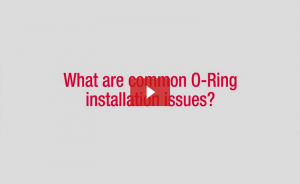O-Rings make or break fluid-power systems. These small-but-mighty components are crucial to the success of an application. In order to meet stringent industry standards, O-Ring production requires careful design, material selection and installation procedures.
No matter how precise engineers may be during design phases, however, O-Ring stresses can sometimes be tough to evaluate. Small flaws can pass through pre-production and cause application issues down the road.
In our latest short video, we cover some of the most common causes of O-Ring installation issues — from overstretching to improper gland volume to failure without evidence — so you can prevent O-Ring problems as early as the design stage.
In under 4 minutes, you can expect to learn:
- How durometer and elongation play into O-Ring stretching;
- The role of ASTM D2000 and why you should precisely follow elastomer classification systems;
- The importance of testing each material in its real environment;
- How to avoid incorrect lubricants, insufficient lead-in chamfers and assembly problems in dynamic and static seals;
- How engineers can be aware of common design issues to avoid premature failure.
Let’s talk O-Rings
What types of O-Ring installation problems do you face? How do you overcome them? Connect with us on Twitter @AppleRubber or contact our engineering team for assistance. Interested in learning about more troubleshooting installation issues? Visit our Seal Design Guide.
